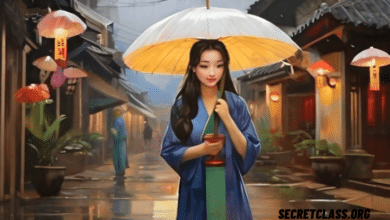Instituto de Educación Secundaria IES in Spain

In Spain, the “Instituto de Educación Secundaria” (IES), also sometimes referred to as “Instituto,” plays a crucial role in the educational journey of young people. This public secondary school system bridges the gap between primary education and higher studies. If you’re considering enrolling your child in an IES or are curious about the Spanish education system, this blog post is for you!
What Age Groups Attend an IES?
Students typically attend an IES between the ages of 12 and 16. This corresponds to the four-year compulsory education program called “Enseñanza Secundaria Obligatoria” (ESO). After completing ESO, students receive a graduation certificate.
What Subjects are Taught at an IES?
The curriculum at an IES focuses on a well-rounded education, encompassing core subjects like:
- Mathematics
- Language and Literature (Spanish and potentially a second language)
- Science (Biology, Physics, Chemistry)
- Social Sciences (History, Geography)
- Physical Education
In addition to these core subjects, IES may offer electives depending on the school and region, allowing students to explore their areas of interest.
Academics: What Else Does an IES Offer?
Spanish secondary schools recognize the importance of holistic development. An IES might provide:
Extracurricular Activities: These activities can range from sports and arts clubs to student government participation.
Vocational Training Programs: Some IES offer introductory vocational training programs alongside ESO, providing students with job-specific skills.
Guidance and Support Services: Counselors and other support staff are available to help students with academic challenges, career planning, and personal issues.
How to Choose the Right IES for Your Child
The selection process for an IES can vary depending on the region in Spain. Here are some general pointers:
Catchment Area: Many IES prioritize students residing within their designated zone.
Specialization: Some IES might specialize in areas like arts, technology, or languages. Consider your child’s interests when choosing.
School Ratings and Reviews: While official ratings might not be readily available, online forums and discussions with local parents can offer valuable insights.
The Importance of Parental Involvement
A successful journey through an IES requires active parental involvement:
- Communicate with teachers and attend school meetings.
- Monitor your child’s academic progress and offer support.
- Explore extracurricular activities together to identify their interests.
Conclusion
The Instituto de Educación Secundaria (IES) plays a vital role in shaping the future of young people in Spain. By understanding the structure, curriculum, and additional offerings of an IES, you can be well-equipped to guide your child through this crucial stage of their education. Remember, collaboration between parents, students, and teachers fosters a positive learning environment for all.
FAQ
What is the difference between an IES and a Colegio?
Colegios are private secondary schools in Spain, offering a similar curriculum to an IES but with potentially smaller class sizes and additional programs. The choice between an IES and a Colegio depends on individual needs and budget.
Does everyone attend an IES in Spain?
Secondary education in Spain is compulsory between the ages of 12 and 16. Students can attend either an IES (public) or a Colegio (private).
Can students repeat a year at an IES?
Similar to most education systems, students who fail a year at an IES may have the option to repeat it with additional support.
How do students progress after graduating from an IES?
Upon successful completion of ESO, students have several options:
- Continue their studies at an IES for “Bachillerato,” a two-year upper secondary program that prepares them for university entrance exams.
- Enroll in vocational training programs for specific careers.
- Enter the workforce directly.
How can I find out more about specific IES in my area?
The Spanish Ministry of Education website (https://www.educacionyfp.gob.es/portada.html) provides directories of schools by region. You can also contact local education authorities or visit the websites of individual IES.





